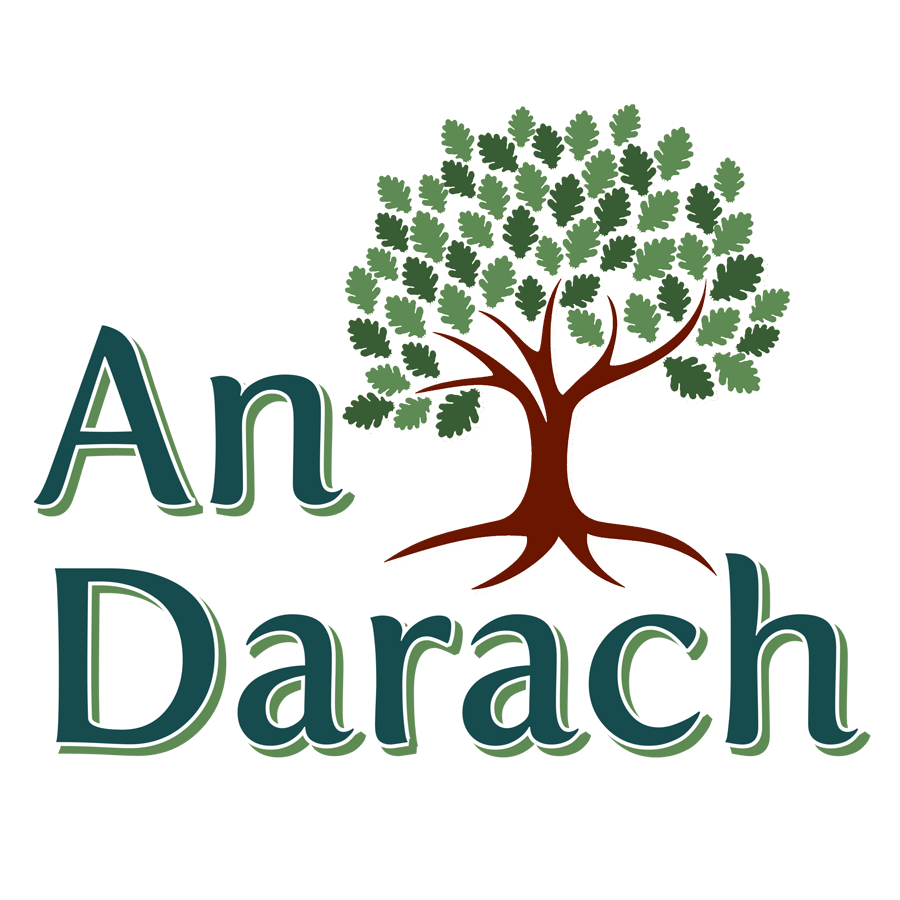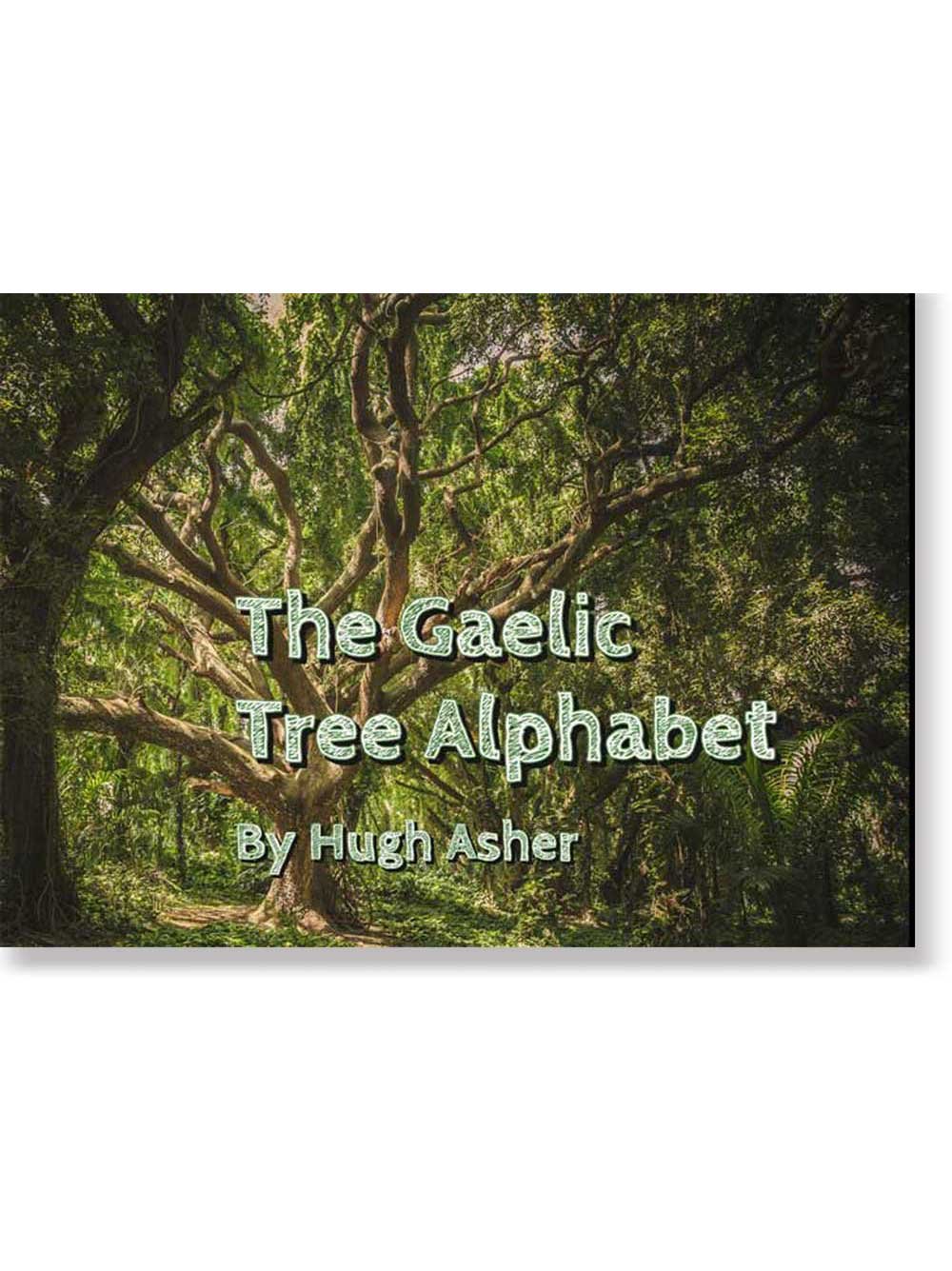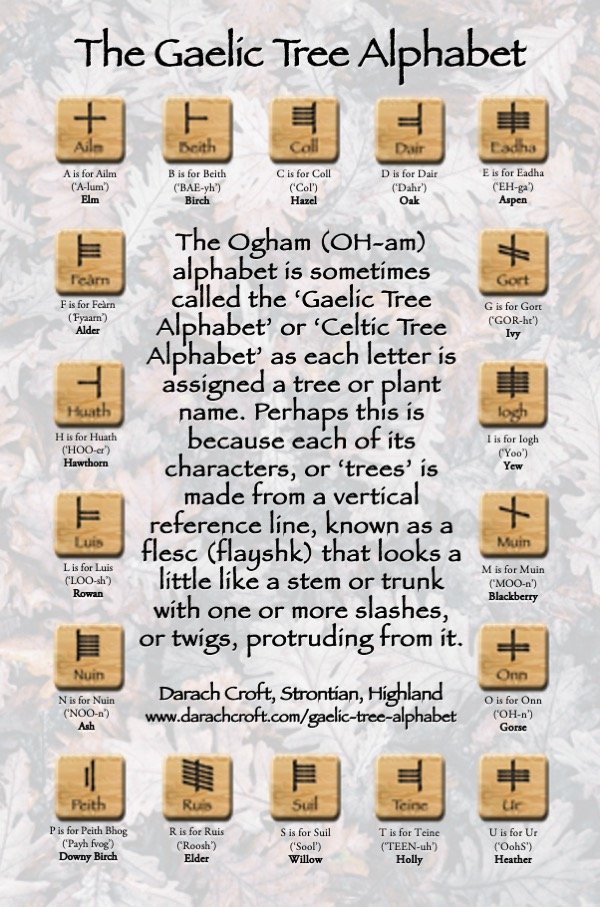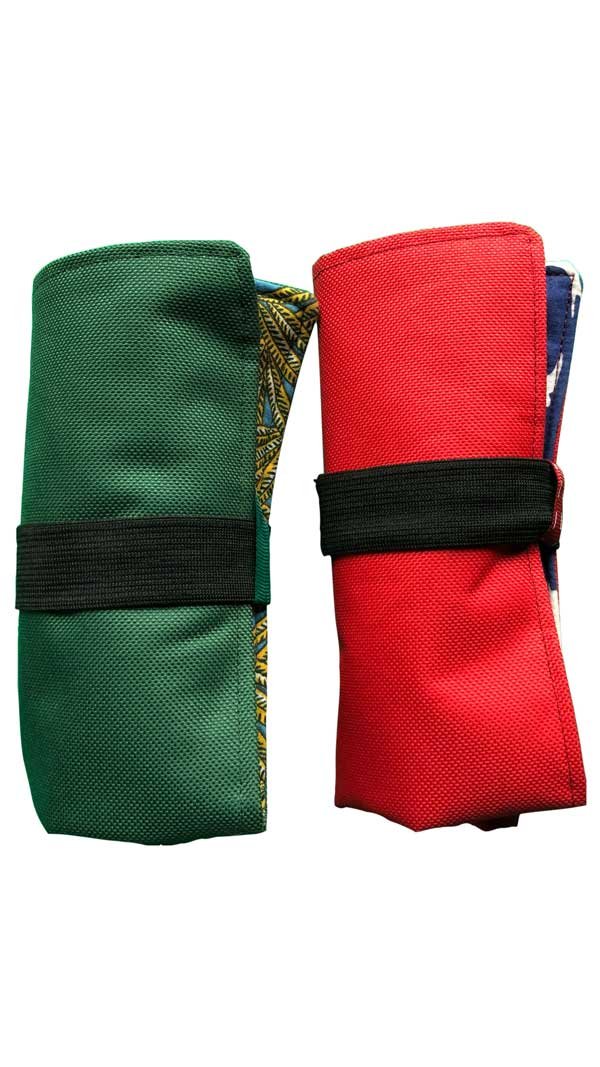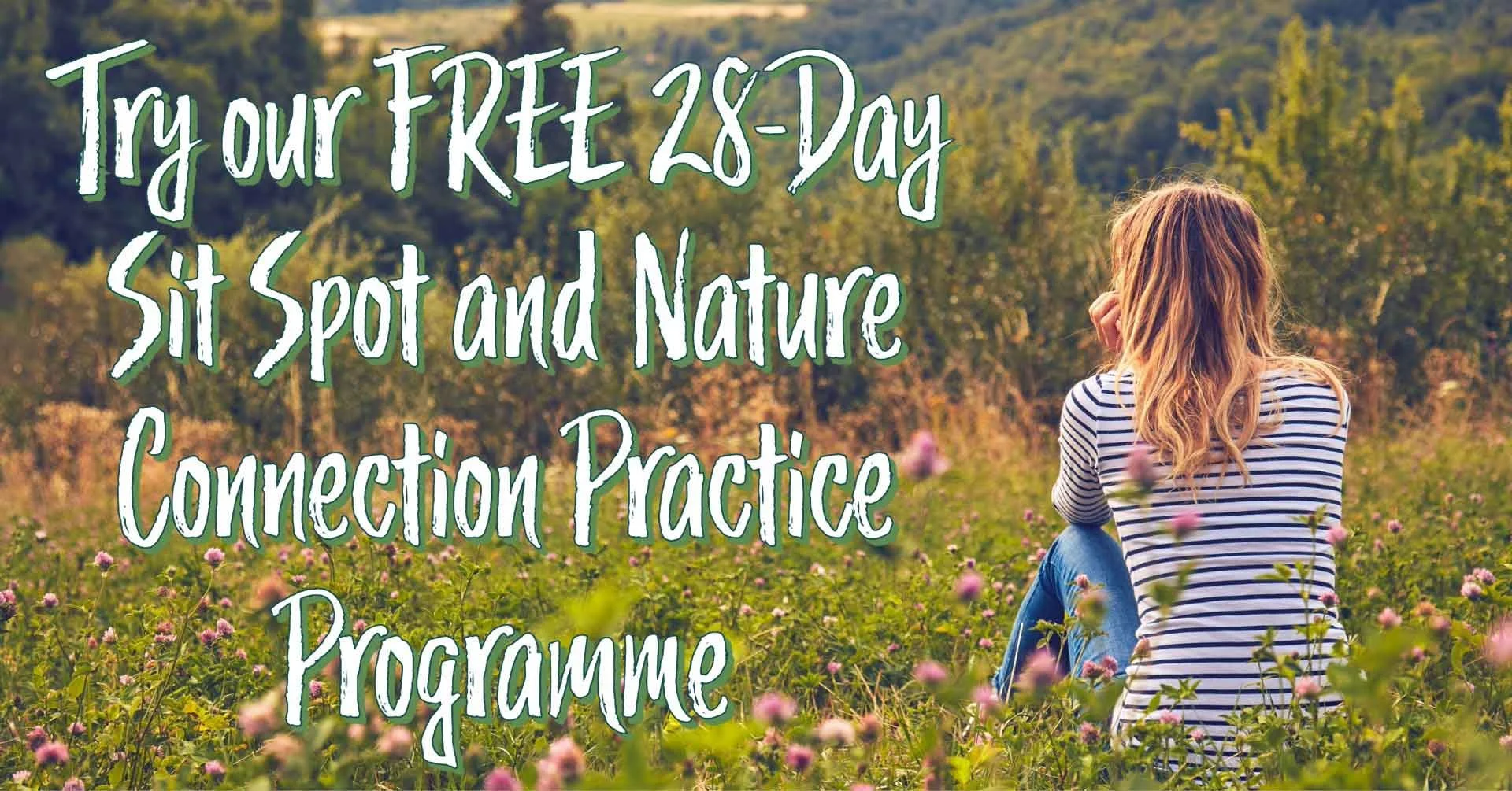The Difference Between Lichens and Mosses
19th November 2022
Whilst the ethos of Forest Bathing and Nature-Connection activities is usually about learning how nature makes you feel, rather than to learn about what something in the forest is, they are both also about encouraging curiosity about nature. So whilst we don’t often go on a Forest Bathing Walk to learn the names of trees (and mosses and lichen) it might still be something that we get a desire to learn more about once we are home.

Reindeer Cup Lichen, (Cladonia rangiferina), also called reindeer moss, a fruticose (bushy, branched) lichen found in great abundance in Arctic lands
Both mosses and lichens are cryptogams, which means that they reproduce through spores but without seeds or flowers, and both are non-vascular plants (see below). While they may often appear together, are frequently mistaken for each other, and are sometimes named ambiguously (see for example Oak Moss and Reindeer Moss which are in fact both lichens) they are actually quite different things! Both lichen and moss can grow on rocks, trees, plants and the ground, and both have previously been used as dyes, as food for animals, in medicines such as antibiotics, and in religious practices.
So, what is the difference between lichen and moss?
The Simple Answer

Simply speaking, a lichen is a combination of two organisms that co-exist together, and so are not really considered to be ‘plants’, whilst a moss is a single simple, quite primitive kind of plant called a bryophyte, but a plant none-the-less. Lichens lack leaves (or leaflets – see below) or stems of any kind, which helps to tell them apart from mosses. As plants, mosses can capture sunlight through photosynthesis in order to produce essential nutrients, whereas in lichen, it is the just the algae component of the combination that photosynthesises whilst the fungal component of the lichen grows hyphae into the cells of the algae to absorb these nutrients.
A More Complex Answer
Mosses
Mosses are one of the most primitive types of plant and their simple structure has remained largely unchanged over the millions of years of their existence. They are non-flowering plants that can produce spores but do not have true roots. Instead they have rhizoids which are small, hair-like structures that are used to anchor the moss to rocks, bark or soil. Some mosses suck up nutrients through their rhizoids, whilst others just absorb water and nutrients from around themselves using their capillary spaces like a big green sponge, which is why mosses are often found in very damp and humid places.

Mosses do have stems and ‘leaflets’ made of photosynthetic cells, a little like the leaves of trees and plants, although they may be so small that you need a magnifying glass to see them. ‘Leaflets’ are leaf-like structures, but they do not contain vascular tissue to transport water and nutrients up to the leaf tips- ‘leaves’ on the other hand do contain the specialised tissue needed to do this. However, this non-vascular structure allows some mosses that adapted to harsher environments to dry out and become dormant when it becomes too hot and to tolerate very low temperatures that other plants cannot.
Most mosses reproduce through spores that are cast out, although others reproduce from parts that are broken off the parent plant and scattered and then grow as a separate plant.
You can read a separate article that we have written all about the benefits of mosses!
Lichens
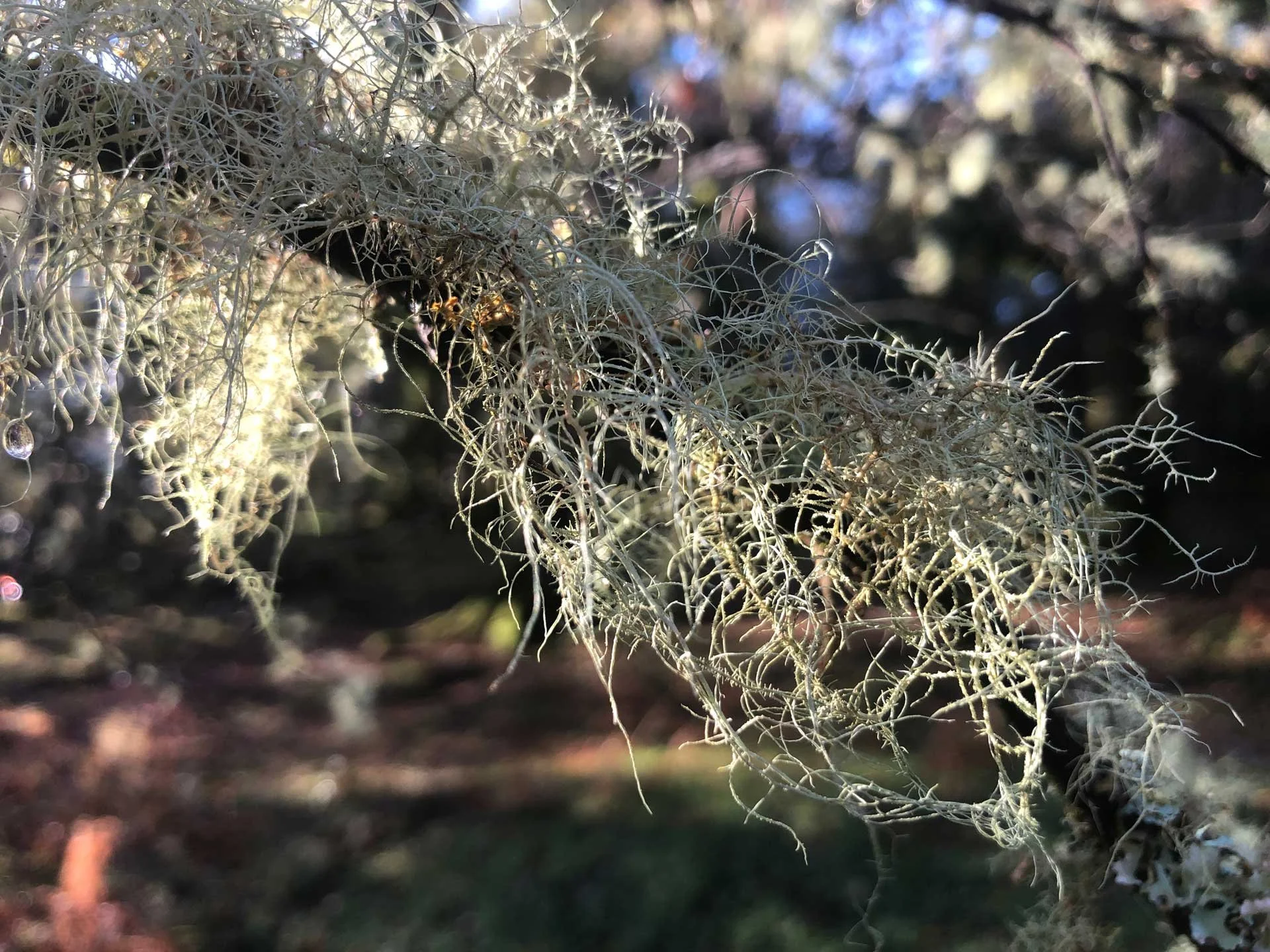
Usnea - a lichen
Lichens are a composite organism made up of a fungus and at least one algae or cyanobacteria. These two components exist together and behave as a single organism, living together and providing some benefit to the other, in what is referred to as a ‘symbiotic relationship’.
The algae (or ‘algal partner’ or ‘photobiont’) supply food and nutrients to the fungus through photosynthesis. Photosynthesis is the process by which green plants and some other organisms use sunlight to synthesize nutrients from carbon dioxide and water, generally involving the green pigment chlorophyll and generating oxygen as a by-product. In return for these nutrients the fungus (or ‘fungal partner’ or mycobiont) provides the body (or thallus) within which the algae lives and protects it from getting too hot or drying out.
According to the New York Botanical Gardens, it is debated whether the relationship in a lichen is mutualistic or part of a controlled parasitism. On one hand, the fungus and the algae appear to be in a mutualistic relationship because when they are combined, they have the ability to deal with ecological conditions that neither part would be able to handle on its own, and it seems that neither partner is damaged by the other. However, on close inspection, some might say that the photobiont is a captive of the mycobiont, not a partner, as the fungal partner ‘enslaves’ the photobiont to feed from its photosynthesis.
Some lichens produce spores in the same way a mosses, and these spores seek to connect with suitable partner algae or bacteria, and in the same way as mosses some lichens reproduce through breakage of the parent.
The Thallus of a Lichen
The thallus is the plant-like body or vegetative tissue of organisms in groups such as lichens, fungi, algae and some liverworts (more on them later!). It lacks differentiation into distinct parts such as stems, leaves, and roots and does not necessarily grow from the top of the plant.
Three Kinds of Lichen on Trees
There are three major types of lichen found on trees, Crustose, Foliose and Fruticose.
Crustose
Crustose lichens have a crust-like body (thalllus) and are tightly attached and cannot be removed without cutting the bark they grow on. They make up the majority of lichens on Earth, some of which grow on plants and trees and others only grow on rocks.

Foliose Lichen
Foliose
Foliose lichens have a thallus that is leaf-like (foliage-like) in both appearance and structure that is attached to the branch at the base, but they are usually easily removeable. They often grow on the ground or on trees and as such are the type most commonly mistaken for moss.
Fruticose
Fruticose lichens have a branched bushy, coral-like or shrub-like thallus attached to the branch by a sucker-like holdfast, and sometimes produce bright fruiting bodies. Fruticose lichens are most commonly found on trees.
Lichens as Environmental Indicators
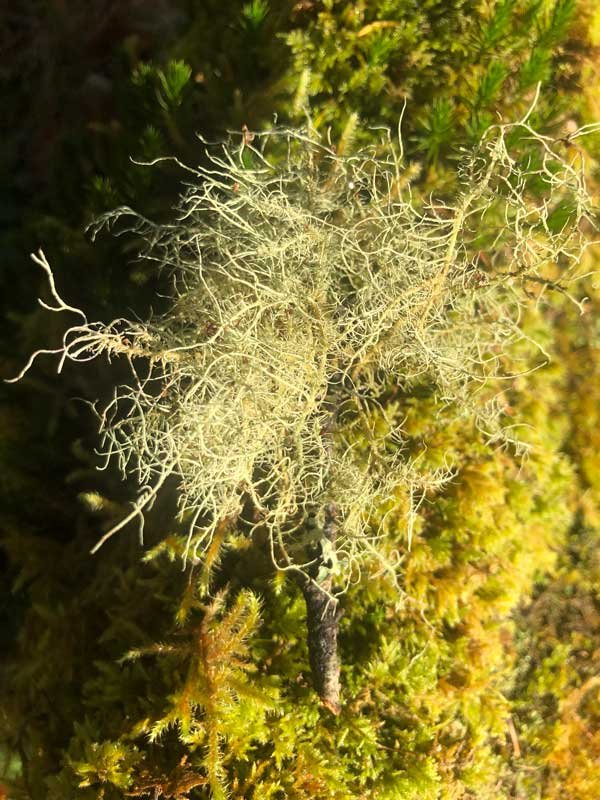
Usnea - a sign of good air quality
Before the Industrial Revolution lichens would have been far more abundant. However, lichens are very sensitive to air pollution as they absorb most of their mineral nutrients from the air and rainfall and so can retain and accumulate large amounts of potentially damaging pollutants. Sulphur Dioxide (SO2) for example - which is produced by burning fossil fuels and smelting mineral ores such as aluminium, copper, zinc, lead, and iron that contain sulfur – can lower the pH of the lichen and lead to deterioration of chlorophyll causing photosynthesis to cease. Whilst there are lichens that tolerate pollution or even depend on it, many do not, and so lichens such as Usnea are a good indicator of the purity of the air and the health of the environment.
And then there are Liverworts and Hornworts too ….
As well as mosses the bryophyte family that mosses are a part of also includes Liverworts and Hornworts which will be discussed in a separate article.

If you have enjoyed this article and would like to support what we do by donating £2 or more to buy saplings, please follow the link below:

Resonance, is a phenomenon that transcends mere intellectual agreement and spans the realms of spirituality, emotion, and cognition. It is a metaphor used when ideas align harmoniously with our inner truth, evoking profound agreement and understanding. This spiritual resonance speaks to the recognition of the divine spark within all things, fostering feelings of awe, wonder and interconnectedness. Intriguingly, this resonance finds a counterpart in the Schumann frequency, the Earth's electromagnetic resonance, believed by many spiritual traditions to synchronise human consciousness with the rhythms of the planet and facilitate spiritual evolution. Thus, resonance serves as a reminder of the inherent unity of existence, inviting us to attune ourselves to the universal frequencies that weave through the fabric of the cosmos.
Earth Day, observed annually on April 22nd, serves as a poignant reminder of the importance of environmental conservation and sustainable living practices. Originating from grassroots activism in the 1970s, Earth Day has evolved into a global phenomenon, uniting people from diverse backgrounds in their commitment to protecting the planet. It serves as a reminder of the interconnectedness of all life forms and the responsibility we bear toward preserving Earth's delicate ecosystems. This article explores the history, ethos, and purpose of Earth Day, highlighting its significance in fostering environmental awareness and catalysing positive change.
Biomimicry is an approach to innovation that seeks sustainable solutions to human challenges by emulating nature’s time-tested patterns and strategies. It involves observing and understanding how nature solves problems, and then applying those principles to design, engineering, and problem-solving in various fields such as architecture, materials science, medicine, and robotics. The concept is based on the idea that nature, through millions of years of evolution, has developed efficient and sustainable solutions to complex problems. By studying these solutions, scientists, engineers, and designers can create technologies, processes, and designs that are more efficient, sustainable, and environmentally friendly.
The natural world has long been a source of inspiration for human beings. From the intricate patterns of a snowflake to the majestic resilience of ancient trees, nature offers a wealth of lessons waiting to be learned. In a world constantly beset by change and uncertainty, the natural world stands as a profound teacher of resilience and adaptation.
Mindful observation involves engaging our senses fully in the present moment, without judgment or distraction. It requires us to slow down, quieten our minds, and open ourselves to the richness of our surroundings. When practiced in nature, we usually seek to attune our senses to the subtle rhythms, textures, sights, sounds and smells of the environment. Whether it's the gentle rustle of leaves in the wind, the intricate patterns of a flower's petals, or the interplay of light and shadow on the forest floor, mindful observation invites us to immerse ourselves fully in the beauty and wonder of the natural world.
The Ghillie Dhu is a legend from Scottish folklore, often depicted as a solitary and elusive forest spirit. In Gaelic folklore, the Ghillie Dhu is said to inhabit the dense forests of Scotland, particularly those in the Highland regions. The Ghillie Dhu is believed to be a benevolent guardian of the forest, possessing a deep affinity for nature and wildlife. It is said to be particularly protective of children and lost travelers, guiding them safely through the wilderness and offering shelter in times of need.
Nature, with its tranquility and metaphors of resilience, can offer solace and comfort in times of distress. Incorporating nature into the grieving and recovery processes can provide people with a supportive environment to navigate their emotions and a way to find inner peace. Here are some of the ways that nature connection activities can facilitate the healing journey.
For the Celts and Picts, who inhabited the lands of modern-day Scotland, Ireland, and parts of Britain, the natural world was not merely a backdrop but a sacred realm intertwined with the spiritual and mundane aspects of existence. The Spring Equinox, occurring around March 20th each year, was a time of profound significance, symbolising renewal, fertility, and the triumph of light over darkness. The equinoxes, representing moments of celestial equilibrium, held a special place in their cosmology.
A curious phenomenon sometimes reported by participants in Forest Therapy sessions is the experience of ‘smelling green’ – an intriguing sensation where the person perceives the scent of the forest as having a green quality. This article explores possible reasons behind this phenomenon, examining concepts such as synaesthesia, psychological associations, and the chemical makeup of forest aromas.
Birds are among the most fascinating creatures on our planet, boasting a multitude of adaptations that enable them to thrive in diverse environments. One of the most remarkable aspects of avian physiology is their respiratory system, which differs significantly from that of mammals, including humans. Understanding the mechanism of avian respiration not only highlights the remarkable evolutionary adaptations of birds but also offers insights into fundamental principles of biology and aerodynamics.
Recovery from problematic drug and alcohol use can be a challenging journey that can often require comprehensive support and a multifaceted approach. The New Economics Foundation (NEF) has proposed five evidence-based actions for improving personal wellbeing, known as the "Five Ways to Wellbeing”. In this article, we explore how these five pillars – Connect, Be Active, Take Notice, Keep Learning, and Give – can play a crucial role in the recovery journey from drug and alcohol problems.
In the face of eco-anxiety, nature connection can serve as a beacon of hope and resilience, an anchor amidst the storm of environmental uncertainty. By immersing ourselves in the beauty and complexity of the natural world, fostering a sense of ecological identity, and cultivating a hopeful outlook, we can navigate our emotions and channel our energies towards positive action. In doing so, we not only heal ourselves but also contribute to the collective endeavour of safeguarding our planet for future generations. As we stand at the crossroads of history, let us embrace the transformative power of nature connection and forge a path towards a more sustainable and harmonious coexistence with the Earth.
Incorporating Forest Therapy into support for substance use problems and mental health challenges holds immense promise as a holistic and integrative approach to recovery. By providing a supportive environment for mindfulness, stress reduction, social connection, and self-exploration, Forest Therapy empowers people to cultivate resilience, foster wellbeing, and embark on a path towards lasting recovery and fulfilment.
The adoption of a ‘Recovery Approach’ in mental health interventions and support for substance users has marked a paradigm shift that places a greater focus on empowering people to lead meaningful lives and attain their full potential. It emphasises people’s ability to recover and live well despite the presence of mental illness and promotes an approached focused on supporting people to achieve improved health, wellness, and quality of life despite experiencing problems with substance use.
In a world that seems to be constantly buzzing with activity, the notion of doing nothing can feel counterintuitive, even taboo. However, as we navigate the complexities of modern life, the importance of embracing moments of stillness becomes increasingly evident. This article examines the art and science of doing nothing, exploring the profound impact it can have on our wellbeing, creativity, and overall quality of life.
In a world that thrives on constant connectivity and stimulation, the ability to sit still and be alone with yourself has become a rare and precious skill. However, learning to sit still and be alone with yourself is not just a skill; it is a transformative practice that holds the potential to foster self-awareness, reduce anxiety, and cultivate a deeper sense of inner peace.
In this article we will examine some of the barriers that people experience to ‘being alone with themselves’ and explore how the nature-mindfulness practice ‘Sit Spot’ can help you to develop techniques and skills for achieving this.
Bees have two distinct sets of eyes, each with their own function. They have two compound eyes on the sides of their heads, and three simple eyes called ocelli on the tops of their heads. The ocelli are simple photo-receptors (light detecting organs) consisting of a single lens and several sensory cells. Unlike compound eyes, ocelli do not form a complex image of the environment but are used to judge light-intensity, detect movement, maintain stability and to navigate.
A wetland is an area of land where the soil is saturated with water, either permanently or seasonally. These areas are characterised by the presence of shallow water, and they play a crucial role in supporting a diverse range of plant and animal life. A peat bog is a wetland made up of a range of plants and mosses, including several species of sphagnum moss, that thrive in such constantly wet conditions. Whilst only 3% of the world’s land surface is peatland, 15% of it is found here in Scotland where peatlands cover about 20% of the land mass.
Engaging with nature, even in simulated forms, has been proven to reduce stress, anxiety, and depression. Biophilic design elements, such as indoor plants, natural lighting, and views of green spaces, create calming environments that promote relaxation and mental clarity, enhancing our overall psychological wellbeing. Studies have demonstrated that these approaches can also significantly boost productivity and foster creativity - stimulating our minds, improving our focus and problem-solving abilities, and promoting innovative thinking.
Biophilia, rooted in both evolutionary history and psychological principles, contributes to humanity's innate affinity for nature. Evolutionary processes have shaped the human species over millions of years, and for the majority of that time, our ancestors lived in natural environments. The adaptive advantages conferred by an intimate connection with nature, such as access to resources and protection from threats, have imprinted a deep-seated predisposition for positive responses to natural stimuli. On a psychological level, this affinity is further underscored by the restorative and calming effects that exposure to nature elicits.
Outdoor education provides a huge potential asset for holistic childhood development. Its rich array of benefits across cognitive, physical, emotional, and social aspects of development make it a crucial component of modern education. By integrating outdoor learning experiences and overcoming logistical challenges, educators can harness the transformative potential of nature's classroom to nurture well-rounded and resilient young people.
Health inequalities persist as a significant challenge worldwide, with disparities in socioeconomic conditions and access to healthcare and education contributing to increasingly divergent health outcomes. This article explores the potential for more holistic and nature-based wellbeing approaches to address these health inequalities and promote overall community health. It also looks at how to guard against reinforcing health inequalities in the delivery of nature-based wellbeing activities.
The goal of Forest Bathing in Winter is not just about physical exercise but also about connecting with nature, reducing stress, and finding inner peace amid the serene Winter landscape. Here are 10 tips that you can adjust to suit your needs and comfort level, and enjoy the therapeutic benefits that nature offers all year-round.
In a today’s world where technology often dominates our attention and the jungle is more often made of concrete than foliage, there are still ample opportunities to connect with nature to benefit our health and wellbeing. In this article we describe seven simple yet effective practices to deepen your relationship with nature.
Duluth packs, hand made in Minnesota USA, are renowned for their unparalleled durability, timeless craftsmanship, and versatile design, embodying a rich heritage deeply rooted in outdoor culture while offering users comfort and reliability for a wide range of adventures.
Making time to connect with nature can be one of the most rewarding habits you can cultivate. Studies have revealed a host of benefits to regular exposure to nature, and incorporating it into your daily routine can improve your mental, physical and emotional wellbeing. By starting small, setting a regular schedule, finding activities that you enjoy, connecting with others, and reflecting on your experiences, you can make nature connection a meaningful and enriching habit in your life. These ten tips can help you to make nature connection a habit.
Nature-Based Wellbeing Plans are bespoke and individualised wellbeing plans, developed in collaboration between you and your Forest Therapy Guide. Everybody’s Nature-Based Wellbeing Plan will be different and will meet your individual preferences and needs. These plans are often designed after you have been on one or more guided Forest Bathing walk or engaged in Forest Therapy activities.
Hogmanay's origins in cultural nature connection practices reflect a deep-rooted bond between Scotland's heritage and the natural world. As the world embraces the New Year, this celebration stands as a testament to the enduring legacy of ancient customs, reminding us of the importance of honouring traditions and nurturing a deep connection to nature. Hogmanay, occurring shortly after the Winter Solstice, acknowledges the Earth's tilt, marking the astronomical event with celebrations that celebrate the rebirth of light. The intertwining of fire, music, and community reflects an ancient understanding of nature's rhythms and the human need to embrace and celebrate them.
Christmas is often a stressful time, but if you can manage to take 10 to 20 minutes out for yourself and try some of these nature connection activities you will hopefully find it a little easier to cope!
As we navigate the festive season, let's pause to reflect the timeless bond between Christmas and nature. By acknowledging the wisdom of ancient cultures, embracing nature's inherent gifts, and infusing our celebrations with nature-centric practices, we can rediscover the heart and essence of Christmas. Let this be a season where we learn to embrace the tranquility of nature, find solace in its beauty, and forge deeper connections with each other and the world around us.
I’m Hugh and I’m a Certified Forest Bathing Guide and Forest Therapy Practitioner, having trained with the Forest Therapy Institute and the Forest Therapy Hub. My purpose in life is to inspire people to improve their wellbeing, and to help people to help and inspire others to improve their wellbeing. I do this through promoting greater nature connection as I am a passionate believer in the benefits to health and wellbeing that nature and increased connection to nature can bring.
Professionally, I have worked for over twenty years supporting people experiencing: mental health problems; autism; learning disabilities; drug and alcohol problems; school exclusion; experience of the care system; and a history of offending behaviour.
I have a PhD in Therapeutic Relationships, but Dr. Hugh makes me sound too much like a Time Lord.
